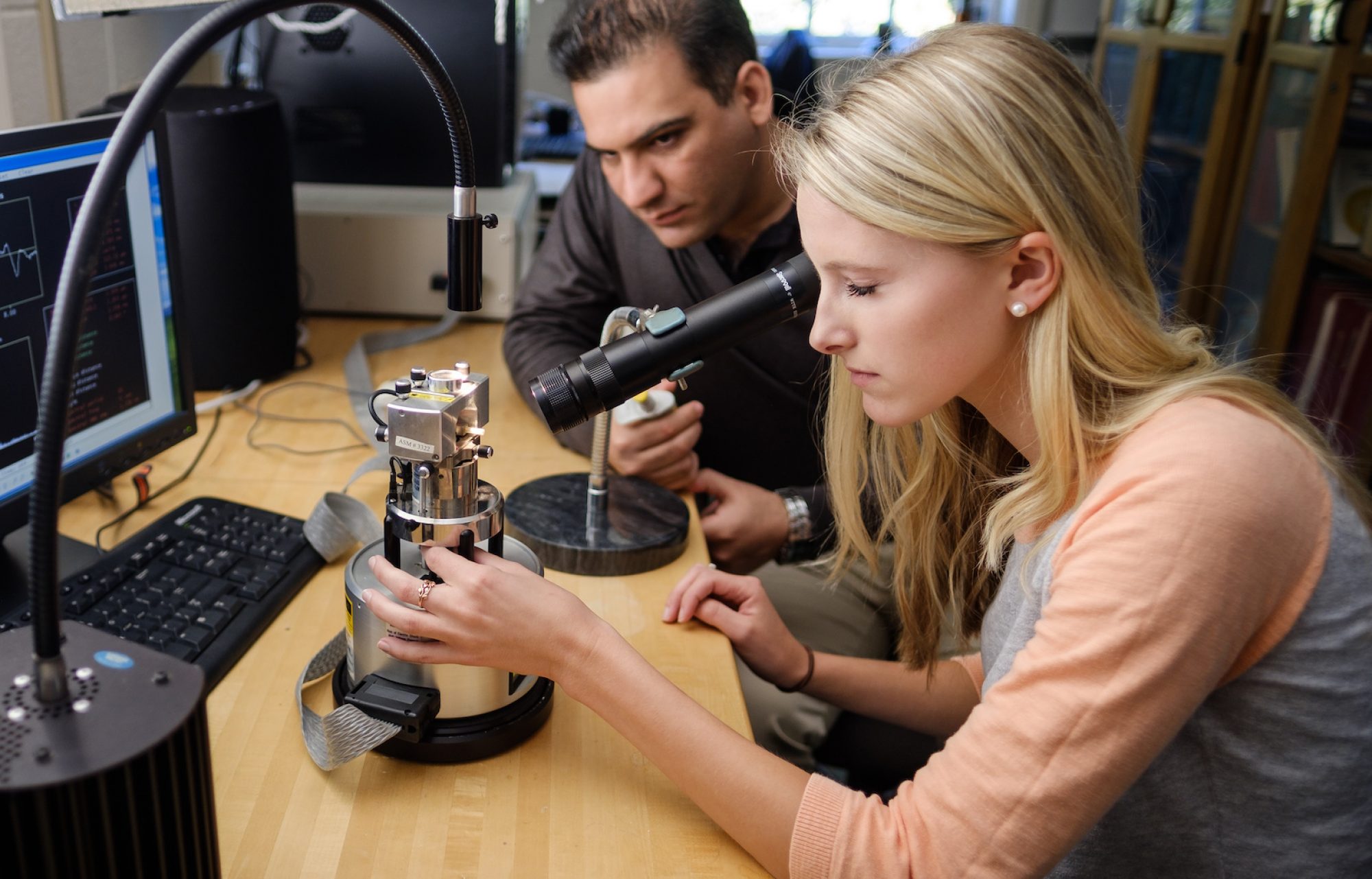Professor Stefan Zauscher
Department of Mechanical Engineering and Materials Science
Duke University
George P. Williams, Jr. Lecture Hall, (Olin 101)
Wednesday, Nov. 13, 2019, at 3:00 PM
There will be a reception in the Olin Lounge at approximately 4 PM following the colloquium. All interested persons are cordially invited to attend.
ABSTRACT
The use of DNA as a polymeric building material transcends its function in biology and is exciting in bionanotechnology for applications ranging from biosensing, to diagnostics, and to targeted drug delivery. Hence, the efficient and precise synthesis of high molecular weight DNA materials has become key to advance DNA bionanotechnology. In the first part of my talk I report on how we exploit a template-independent DNA polymerase —terminal deoxynucleotidyl transferase (TdT)— to catalyze the polymerization of 2’-deoxyribonucleoside 5’-triphosphates (dNTP, monomer) from the 3’-hydroxyl group of an oligodeoxyribonucleotide (initiator). We found that the reaction kinetics follows a “living” chain-growth polycondensation mechanism, and that like in living polymerizations, the molecular weight of the final product is determined by the starting molar ratio of monomer to initiator. Our synthesis approach can incorporate a wide range of unnatural dNTPs into the growing chain which allows us to synthesize multifunctional block- copolymers that can self-assemble into micellar structures for drug delivery applications.
In the second part of my talk I report on recent activities in developing a new class of acoustic shear wave resonator sensors (SWRS). I will show that by confining fluid into small, rigid channels oriented perpendicularly to the shear direction of the SWRS, we can manipulate liquid to behave as a lossless layer and thus perform precise mass measurements of the confined liquid. Canceling viscous effects in µ-fluidic SWRS not only enhances their mass resolution in liquid to levels observed in air/vacuum, but also enables efficient device miniaturization. Combined with the extremely small volume requirements for sensing (~nL), I will show that µ-luidic SWRS can overcome current barriers for their widespread use in diagnostic sensing and point of care applications.
